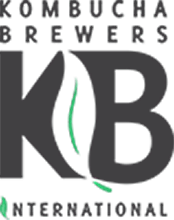Characterization of Cellulose Production by a Gluconacetobacter xylinus Strain from Kombucha
Authors:
Vu Tuan Nguyen, Bernadine Flanagan, Michael J. Gidley, Gary A. Dykes
Abstract:
The aims of this work were to characterize and improve cellulose production by a Gluconoacetobacter xylinus strain isolated from Kombucha and determine the purity and some structural features of the cellulose from this strain. Cellulose yield in tea medium with both black tea and green tea and in Hestrin and Schramm (HS) medium under both static and agitated cultures were compared. In the tea medium, the highest cellulose yield was obtained with green tea (*0.20 g/L) rather than black tea (*0.14 g/L). Yield in HS was higher (*0.28 g/L) but did not differ between static and agitated incubation. 1H-NMR and 13CNMR spectroscopy indicated that the cellulose is pure (free of acetan) and has high crystallinity, respectively. Cellulose yield was improved by changing the type and level of carbon and nitrogen source in the HS medium. A high yield of *2.64 g/L was obtained with mannitol at 20 g/L and steep corn liquor at 40 g/L in combination. In the tea medium, tea at a level of 3 g/L gave the highest cellulose yield, and the addition of 3 g/L of tea to the HS medium increased cellulose yield to 3.34 g/L. In conclusion, the G. xylinus strain from Kombucha had different cellulose producing characteristics than previous strains isolated from the fruit. Cellulose was produced in a pure form and showed high potential applicability. Our studies extensively characterized cellulose production from a G. xylinus strain from Kombucha for the first time, indicating both similarities and differences to strains from different sources.
Keywords: acetobacter, black tea, cellulose, gluconacetobacter, green tea, mannitol, time
Country: Australia
Citation: Current microbiology, 57(5), 449-453.
Study Mailing Address:
Gary A. Dykes, Food Science Australia, Brisbane, Queensland, Australia
Date Updated: March 3, 2020
 0 people like this study.
0 people like this study.